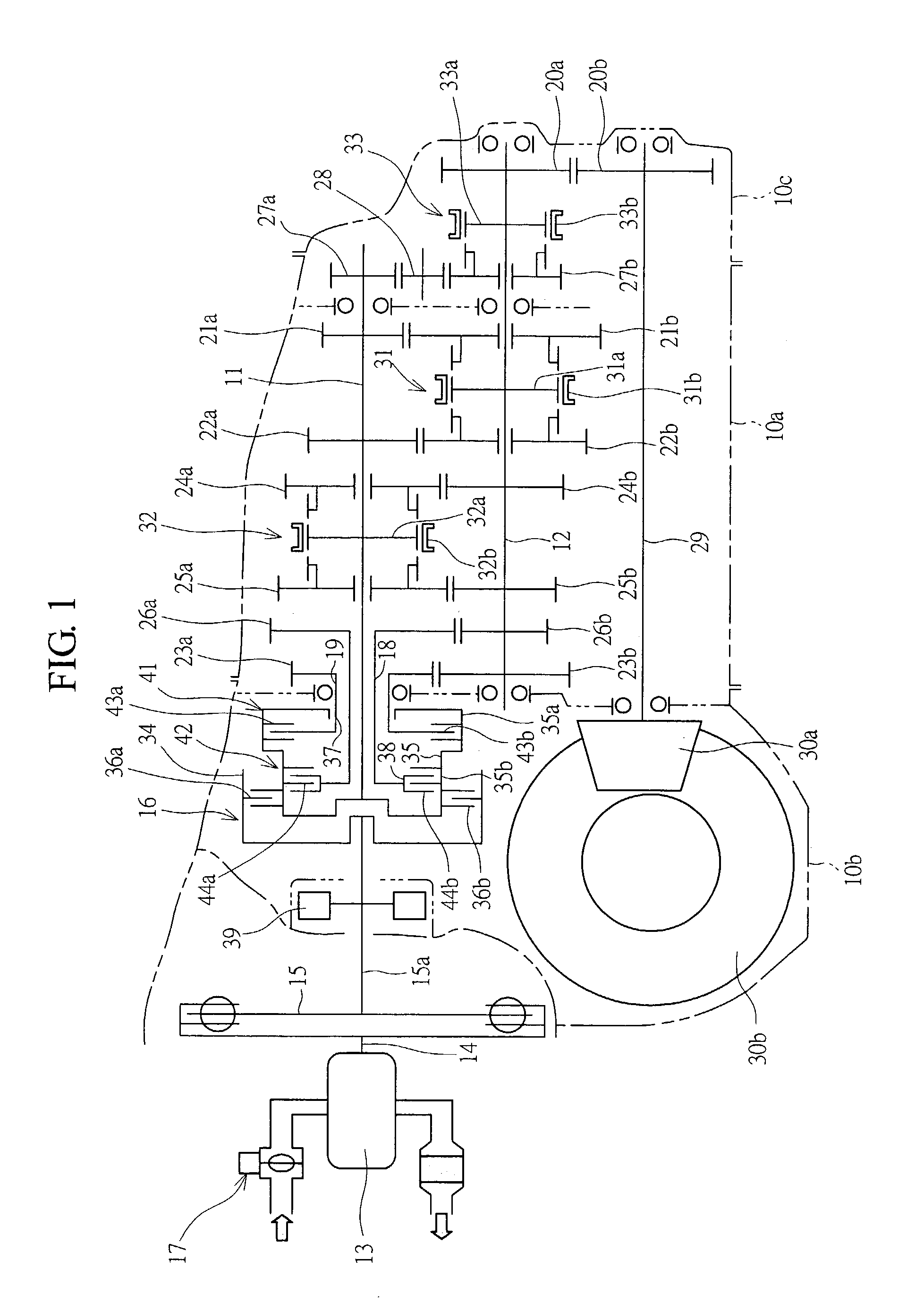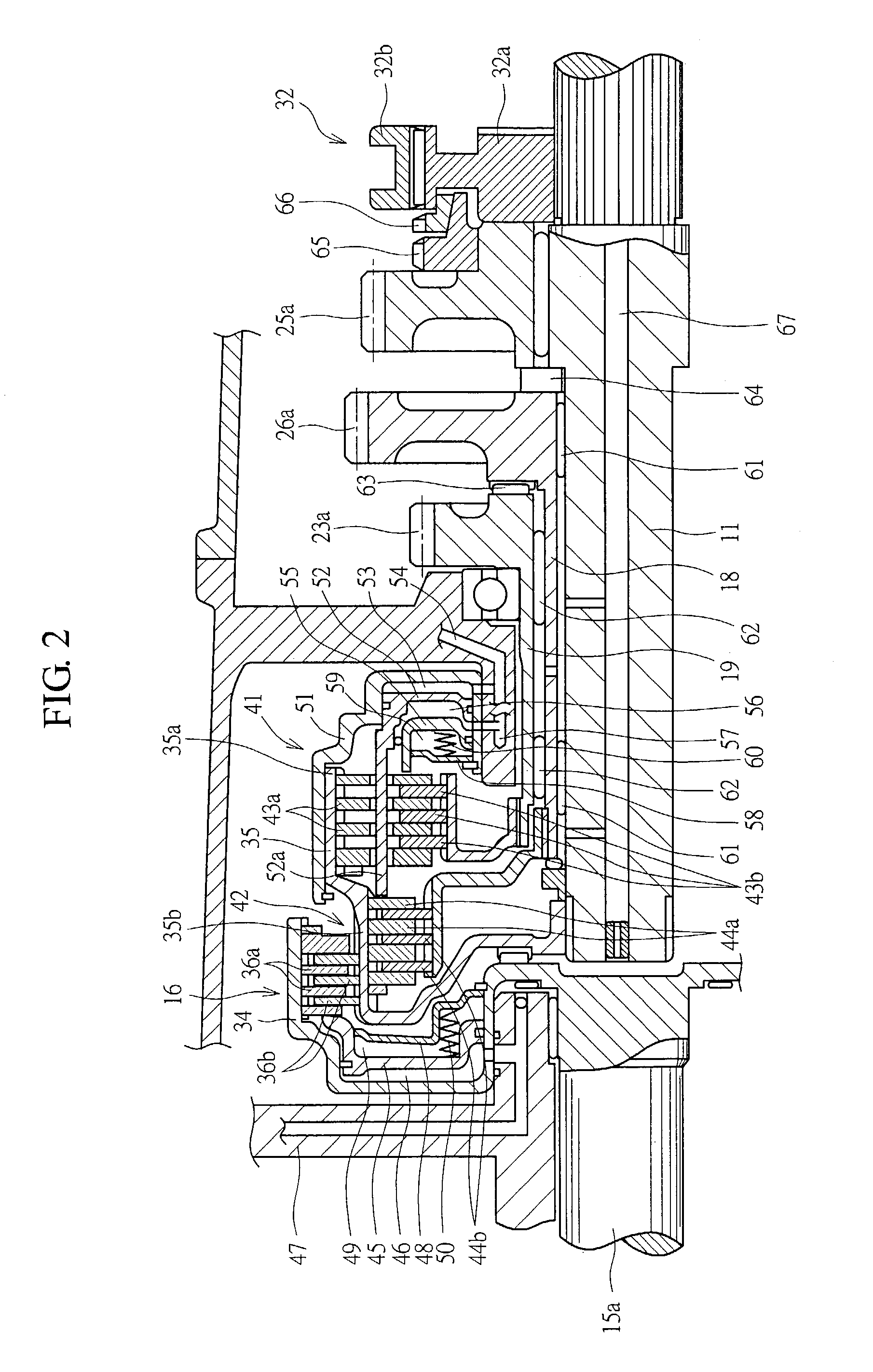Automatic transmission
a transmission and automatic technology, applied in mechanical equipment, transportation and packaging, gear shifting, etc., can solve the problems of reducing the driving speed, affecting the transmission response ability, and the driver may feel uncomfortable, so as to reduce the shock of the gear shift, improve the response ability of the transmission, and smooth the effect of the gear shift quality
- Summary
- Abstract
- Description
- Claims
- Application Information
AI Technical Summary
Benefits of technology
Problems solved by technology
Method used
Image
Examples
Embodiment Construction
[0030]As shown if FIG. 1, an automatic transmission has an input shaft 11 and an output shaft 12, and these shafts 11, 12 are contained within a transmission case 10a so as to be in parallel with each other. A clutch case 10b is mounted on one end side of the transmission case 10a, and an extension case 10c is mounted on another end side thereof.
[0031]A damping (or attenuating) apparatus, that is, a damper 15 is arranged between a crankshaft 14 and an input shaft 11 of an engine 13. And an input clutch, that is, a start clutch 16 is arranged between the damper 15 and the input shaft 11. Accordingly, when the start clutch 16 is in an engaged state, an engine power is damped in vibration by the damper 15 so as to be transmitted to the input shaft 11, and the engine power is not transmitted by releasing the engagement. Further, the start clutch 16 is formed by a multiple disc type wet friction clutch, and has a function of forming a half-clutch state, that is, a slip state so as to smo...
PUM
 Login to View More
Login to View More Abstract
Description
Claims
Application Information
 Login to View More
Login to View More - R&D
- Intellectual Property
- Life Sciences
- Materials
- Tech Scout
- Unparalleled Data Quality
- Higher Quality Content
- 60% Fewer Hallucinations
Browse by: Latest US Patents, China's latest patents, Technical Efficacy Thesaurus, Application Domain, Technology Topic, Popular Technical Reports.
© 2025 PatSnap. All rights reserved.Legal|Privacy policy|Modern Slavery Act Transparency Statement|Sitemap|About US| Contact US: help@patsnap.com



